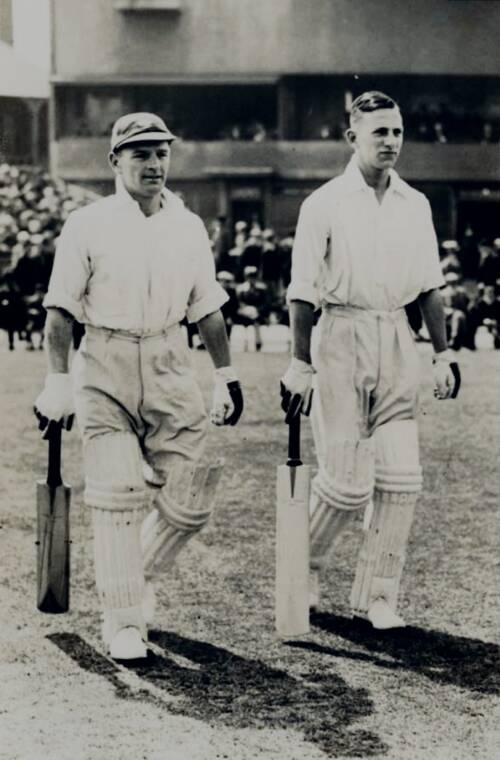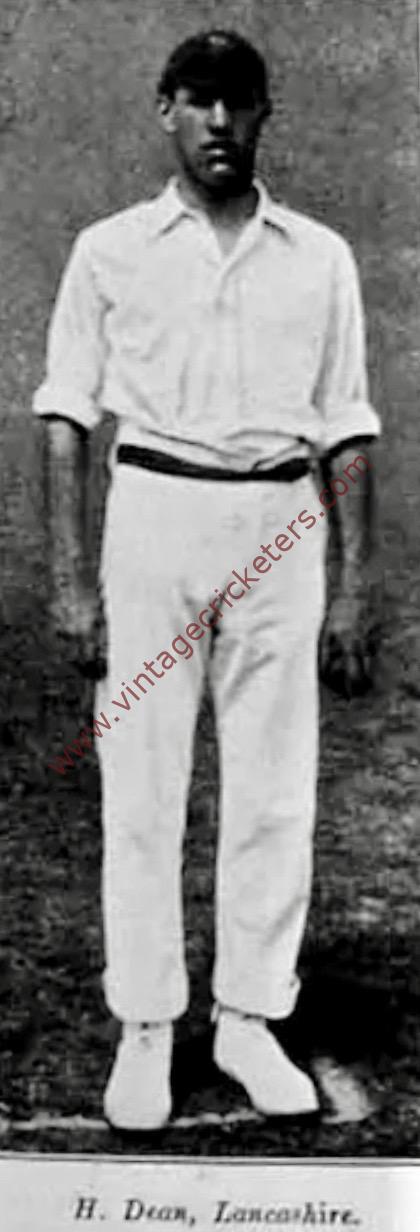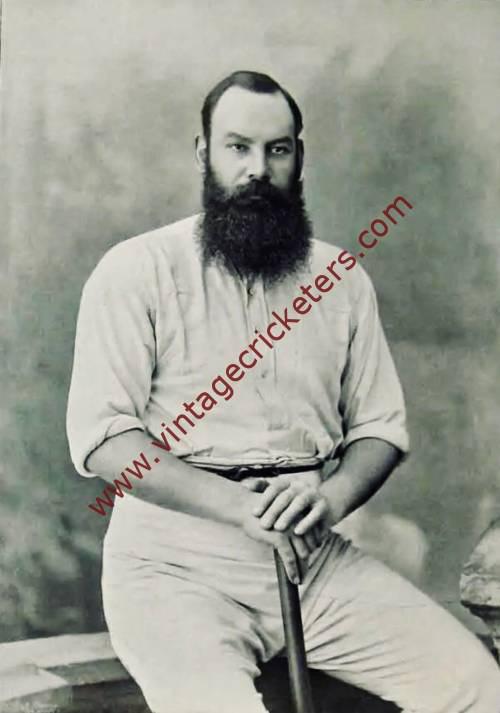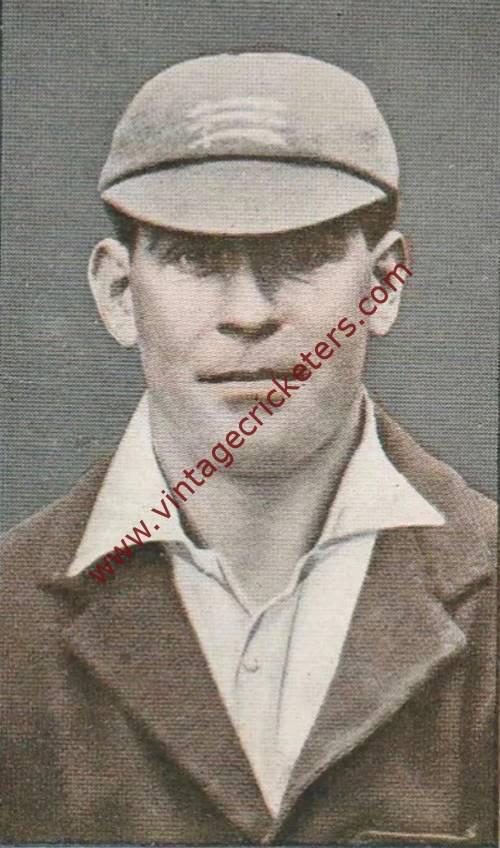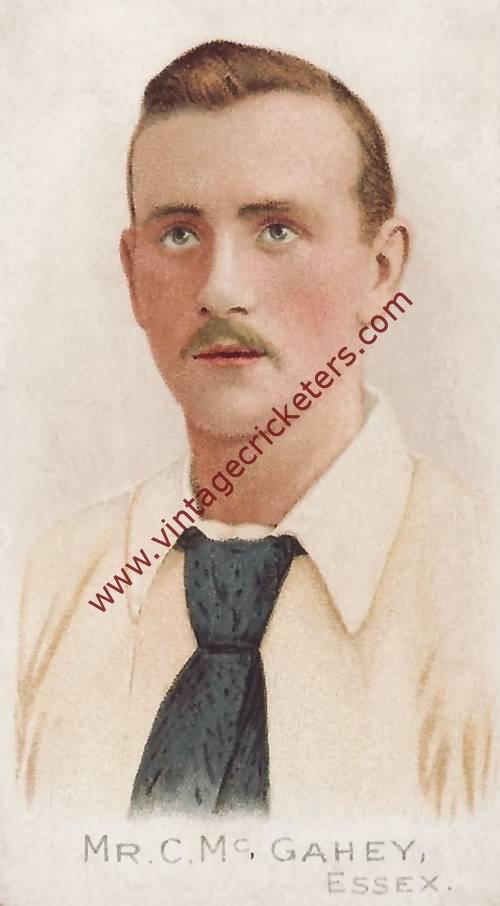Please choose your photo size from the drop down menu below.
If you wish your photo to be framed please select Yes.
Note: 16″x 20″not available in a frame.
Images can also be added to accessories. To order please follow these links
£8.95 – £49.95Price range: £8.95 through £49.95
Please choose your photo size from the drop down menu below.
If you wish your photo to be framed please select Yes.
Note: 16″x 20″not available in a frame.
Images can also be added to accessories. To order please follow these links
powered by Advanced iFrame
Cleckheaton, Yorkshire born opening right hand batsman and occasional right arm fast medium bowler Wilf Barber did not appear for the Yorkshire Second XI until he was 25, in 1926, when he scored 600 runs, including a century, and averaged 40. The same season, he made his first class debut for Yorkshire against Worcestershire without playing a single innings. He was scheduled to bat later in the innings and was not needed to bat as Yorkshire completed an easy victory. The next season, he was chosen to play three matches, with a top score of 18. For the next few years, he was unable to attain a regular spot in the Yorkshire side as there were many batsmen competing for places. In the 1928 season, Barber played 16 matches, mainly when other batsmen were required in representative matches, passing fifty for the first time in an innings of 98 against The West Indians, and followed this with two other fifties. The next season, he scored his maiden first-class century against The South Africans in an innings of 108, out of a team total of 335, with no other batsman reaching fifty. In total, he played on 22 occasions and scored 857 runs at an average of 30.60, including a second century, against Glamorgan. However, Barber was in and out of the side over the next two seasons. He did not play 20 matches or reach 500 runs in either season and passed fifty only four times in total.
Matters changed for Barber in the 1932 season, when Yorkshire’s regular, long serving opening batsman Percy Holmes began to suffer with illness. This left a batting place empty and enabled Barber to play more regularly. Wisden Cricketer’s Almanack believed that he thoroughly deserved his place in the team as he scored exactly 1,000 runs at an average of 25.64, the first time he reached four figures in a season. He finished fifth in the Yorkshire batting averages, the first time he had been placed so high. His runs also played a part in Yorkshire winning the County Championship in his first full season. After this breakthrough, Barber steadily improved his total of runs and batting average, helping Yorkshire to win the County Championship twice in 1933 and 1935. In 1933, he scored 1,595 runs at an average of 33.93, and in 1934 he scored 1,927 runs at an average of 40.14. In both seasons he finished fourth in the Yorkshire averages. However, Barber’s best season statistically was the following season, 1935, when he achieved his best aggregate of runs and highest average in an English season, passing 2,000 runs in a season for the only time in his career. He scored 2,147 runs at an average of 42.09 and finished third in the Yorkshire averages.These performances earned him selection for the Players against the Gentlemen at Lord’s Cricket Ground for the only time in his career, where he scored 61 and 18 not out.
He also hit 248 against Kent at Headingley in June 1934, when he and Len Hutton, by scoring 267 for the first wicket, saved their side from an awkward situation after facing a first innings deficit of 148. Barber shared in seven other opening partnerships of 100 or more for Yorkshire, four of them with Arthur Mitchell, with whom he became the natural successor to Holmes and Sutcliffe. He also took part in six other stands of 200, of which the largest was 346 in four and a half hours with Maurice Leyland, against Middlesex at Sheffield in 1932, a record for the Yorkshire second wicket.
Also in 1935, Barber was chosen to represent England in the Test series against South Africa. He played in the third and fourth Tests at Headingley and Old Trafford that July after England had lost the second match to be 1-0 down in the series. He was one of six Yorkshire players selected that season. He scored 83 runs in four innings with a highest score of 44 in the fourth Test at an average of 20.75 but England only drew these matches and he was left out of the final game. He also took a wicket with his second (and final) ball in Test cricket, when the match was heading towards an obvious draw. Following these matches, he was chosen to go on the non-Test playing tour by the Marylebone Cricket Club of Australia and New Zealand that winter under the captaincy of Errol Holmes. He was the senior professional but was not as effective as had been expected in Australia. However, in New Zealand he scored 365 runs in the matches against a New Zealand representative team, at an average of 60.83. He scored 797 runs in all first class matches, average 41.94, including two centuries.
Although Barber did not play any more Tests, his scoring was consistent in the four seasons up until the outbreak of the Second World War. In all but 1936 (he scored 993 runs that year), he scored around 1,500 runs and in all but 1938 (he averaged just under 34), he averaged between 36 and 38. He was second in the Yorkshire batting averages in 1936, fourth in 1937 and 1939 but slipped to sixth in 1938. Following the War, Barber played one more full season, scoring 1,170 runs at an average of 30.00 in 1946 to be fourth in the Yorkshire averages. It was the eighth and final time he passed 1,000 runs in a season. During these seasons, Barber’s runs contributed to Yorkshire being County Champions in four consecutive seasons from 1937 to 1939 and then again after the War in 1946. He played a further three matches in 1947 to bring his career to a close. From 1932, when Barber became a regular player, until his last full season in 1946, he was part of a Championship winning side seven times.
In 373 first class matches, Barber scored 16,402 runs at an average of 34.38 with 29 hundreds and 78 half centuries and a high score of 255. He also took 16 wickets at 26.18 apiece and held 182 catches, including one in Test cricket.
Vintage Cricketers was founded in July 2019. There may be more photographs of this cricketer in the Vintage Cricketers library, which are due to be loaded in due course. In the meantime, please send a message to us using the contact form at the bottom left of this page and we can arrange to prepare and publish all images of this cricketer if you have a particular interest in him.
| Weight | N/A |
|---|
